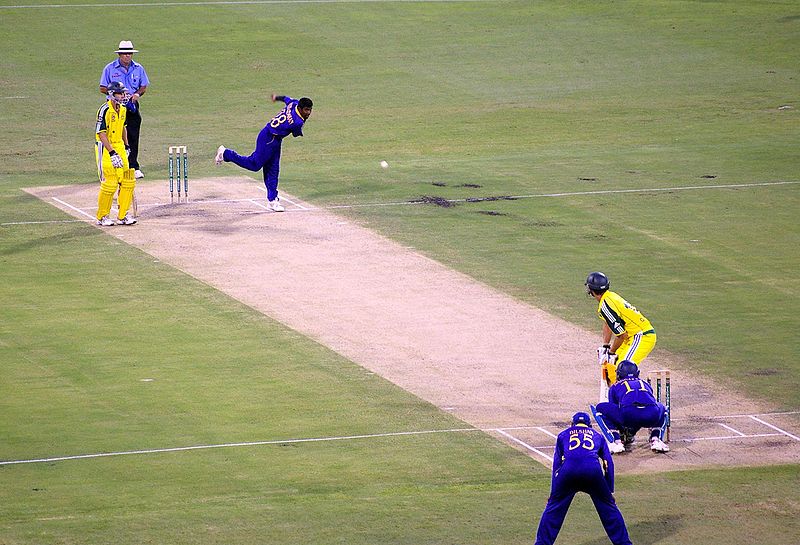How to Spin a Ball and Understand the Different Types of Spin Bowling
Spin bowling is an art that can leave batsmen puzzled and fans on the edge of their seats. Whether you’re an aspiring cricketer or simply curious, learning how to spin a ball and understanding the types of spin bowling is essential for mastering the sport.
In this guide, we’ll explore the key techniques, the science behind spinning the ball, and dive into the fascinating world of spin bowlers who have made history. Let’s unravel the secrets of spin bowling step by step.
What Is Spin Bowling?
Spin bowling is a style of bowling in cricket where the bowler uses their fingers, wrists, or both to create rotation on the ball. This rotation causes the ball to deviate after pitching, making it challenging for batsmen to predict its trajectory.
Spin bowlers typically aim to trick batsmen with variations in turn, bounce, and flight. To master spin bowling, you first need to understand its two main types: off-spin and leg-spin.
Types of Spin Bowling
1. Off-Spin Bowling
Off-spin bowling involves spinning the ball from the off side to the leg side for a right-handed batsman. Bowlers use their fingers to impart spin, and it’s often referred to as “finger spin.”
- Key Features:
- Easier to control.
- Effective against right-handed batsmen.
- Common variations include the arm ball and doosra.
- Famous Off-Spinners: Ravichandran Ashwin, Nathan Lyon, and Muttiah Muralitharan have all mastered off-spin to dominate batsmen.
2. Leg-Spin Bowling
Leg-spin is the opposite of off-spin. Here, the bowler spins the ball from the leg side to the off side for a right-handed batsman. Wrist movement is critical in this style, earning it the nickname “wrist spin.”
- Key Features:
- Harder to bowl but more deceptive.
- Produces sharp turns.
- Variations include the googly, flipper, and slider.
- Famous Leg-Spinners: Shane Warne, Anil Kumble, and Yasir Shah are legendary leg-spinners who made batsmen second-guess every delivery.
3. Other Types of Spin Variations
Spin bowlers don’t just rely on standard off-spin or leg-spin. They use a mix of deliveries to outwit batsmen:
- The Doosra: An off-spinner’s weapon that turns the other way.
- The Googly: A leg-spinner’s surprise ball that spins in the opposite direction.
- The Flipper: A quicker, flatter delivery that stays low.
- The Carrom Ball: A unique delivery where the ball is flicked with the fingers.
Understanding these variations is crucial for anyone wanting to learn how to spin a ball in cricket effectively.
How to Spin a Ball in Cricket: Step-by-Step Guide
Step 1: Understand the Grip
The grip is the foundation of spin bowling. Different grips are used depending on the type of spin.
- Off-Spin Grip: Place your index and middle fingers across the seam, with the thumb providing support underneath.
- Leg-Spin Grip: Hold the ball with the first two fingers and use your wrist to impart spin.
Step 2: Perfect Your Action
Your bowling action determines how well you can spin the ball. Keep your run-up smooth and focus on your arm position during delivery. For off-spin, your fingers should do the work, while wrist action is key for leg-spin.
Step 3: Focus on the Release
The release is where the magic happens. Spin the ball using your fingers or wrist as it leaves your hand. Aim to give it a good amount of revolutions to maximize turn.
Step 4: Control the Flight
Flighting the ball means tossing it slightly higher to deceive the batsman. This gives the ball more time to spin and can lure the batsman into making a mistake.
Step 5: Practice, Practice, Practice
Spinning the ball effectively takes hours of practice. Focus on consistency, and don’t be afraid to experiment with different grips and deliveries.
Why Spin Bowling Is Important in Cricket
Spin bowling brings variety and unpredictability to a cricket match. A good spinner can break partnerships, control the game’s pace, and make life difficult for even the most skilled batsmen.
Key Advantages of Spin Bowling:
- Can exploit pitch conditions, especially on turning tracks.
- Adds an element of surprise with variations.
- Often economical, keeping the run rate in check.
Tips for Aspiring Spinners
- Start Small: Focus on basic spin before learning variations.
- Analyze Great Spinners: Watch videos of Shane Warne or Ravichandran Ashwin to understand their techniques.
- Work on Accuracy: Spin alone won’t help if you lack control.
- Strengthen Your Fingers and Wrists: Use exercises like squeezing a stress ball or wrist curls.
FAQs
Who are the best spinners in cricket history?
Shane Warne, Muttiah Muralitharan, and Anil Kumble are often regarded as the best spinners in cricket history due to their exceptional records.
How do you spin a ball as a beginner?
Start with a proper grip, practice spinning with your fingers or wrist, and focus on releasing the ball with the correct technique.
Why is spin bowling difficult to master?
Spin bowling requires precision, control, and a deep understanding of pitch conditions. It also demands physical strength in the fingers and wrists.
What are the types of spinners in cricket?
The main types of spinners in cricket are off-spinners, leg-spinners, and left-arm orthodox spinners.
How does pitch affect spin bowling?
Dry and rough pitches offer more grip, making it easier for the ball to turn. Damp or grassy pitches reduce spin effectiveness.
Conclusion
Learning how to spin a ball is as much about practice as it is about understanding the basics. Whether you’re aiming to bowl an unplayable leg-spin or control the game with consistent off-spin, mastering the types of spin bowling is a game-changer.
With dedication and the right techniques, you can turn into a bowler who leaves batsmen scratching their heads. So, grab a ball, head to the nets, and start spinning your way to success!














Post Comment